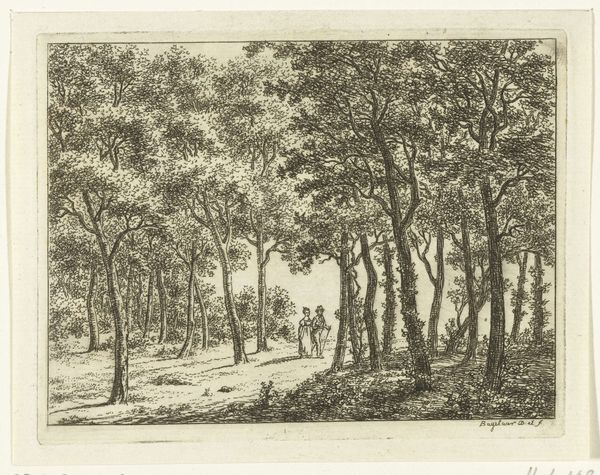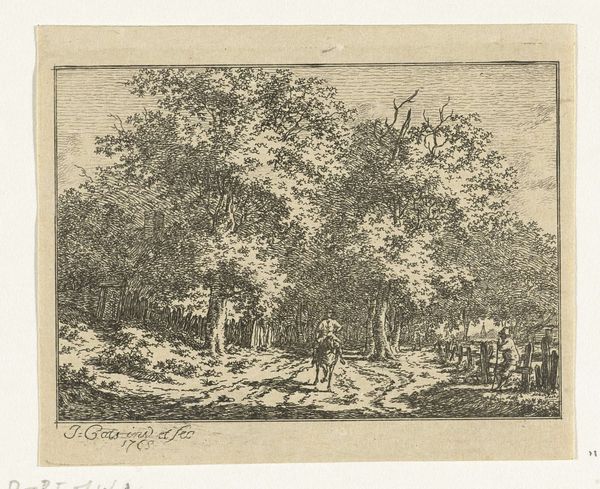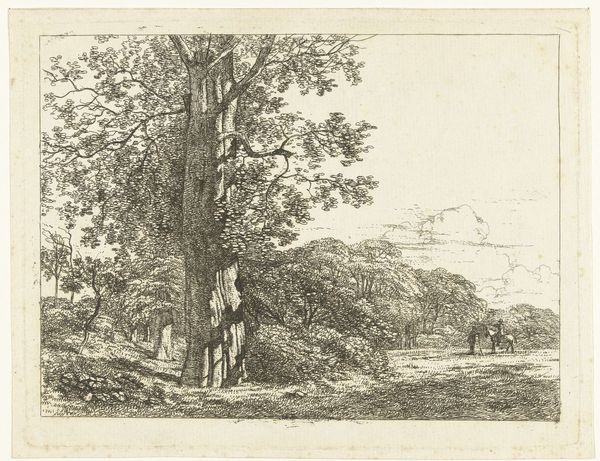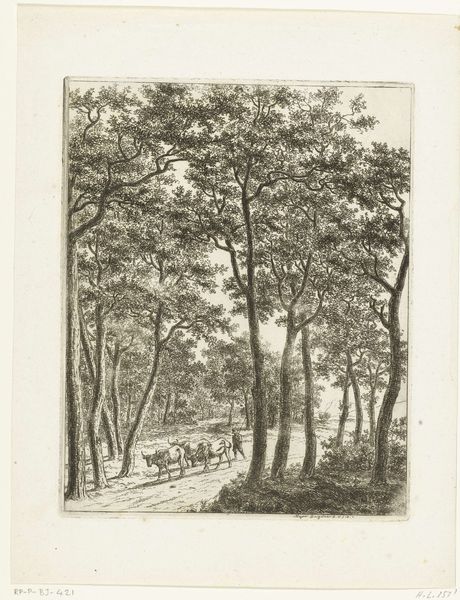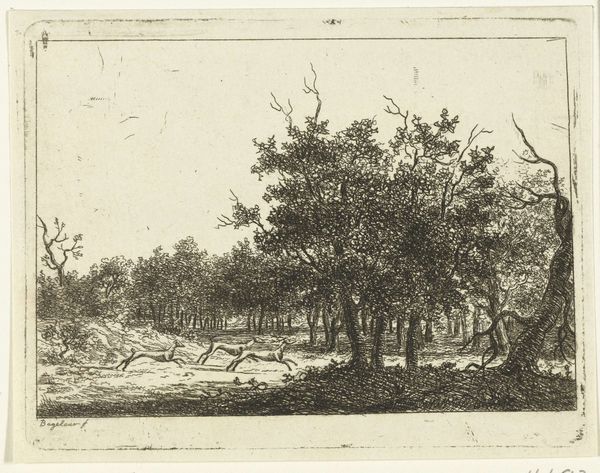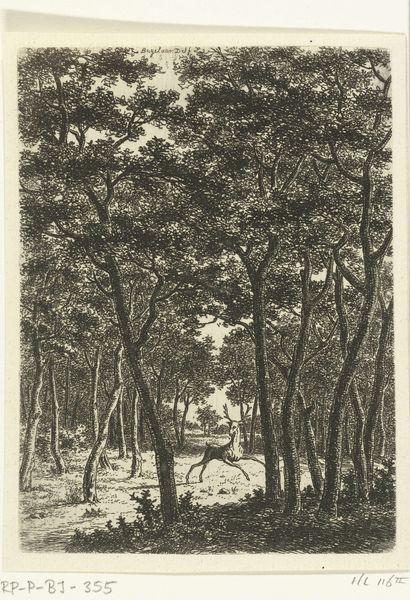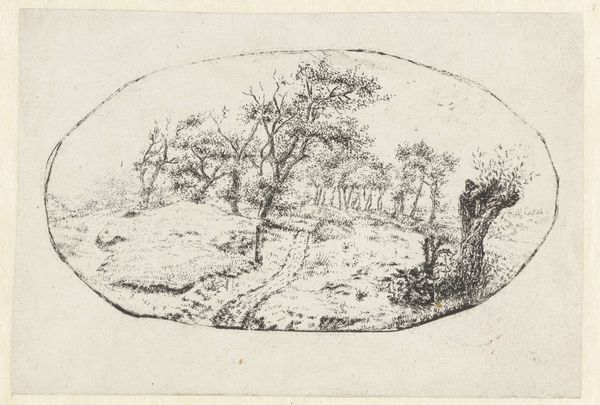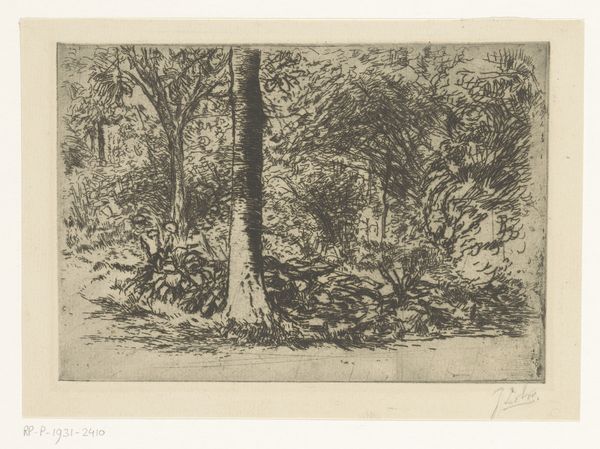
drawing, ink
#
drawing
#
pen drawing
#
landscape
#
ink
#
forest
#
romanticism
Dimensions: height 32 mm, width 64 mm
Copyright: Rijks Museum: Open Domain
Ernst Willem Jan Bagelaar etched this forest scene, likely in the early 19th century, with a precision that belies the wildness it depicts. At its heart lies the figure of a seated man, dwarfed by the towering trees, and beckoning us into the scene. The forest, as a symbol, echoes through the ages. Think of the forests of myth, from the dark woods in Grimm's tales to the sacred groves of classical antiquity. These are not just collections of trees, but spaces of transformation, danger, and revelation. Consider, too, how forests appear in the works of German Romantic painters such as Caspar David Friedrich, where figures wander alone, searching for meaning amidst nature's grandeur. Forests often embody the subconscious, a place where the rational mind gives way to instinct and emotion. Bagelaar’s forest invites us to lose ourselves, to confront our own inner wilderness. The forest has always been a place of mystery, a powerful force engaging us on a deep, subconscious level.
Comments
No comments
Be the first to comment and join the conversation on the ultimate creative platform.
